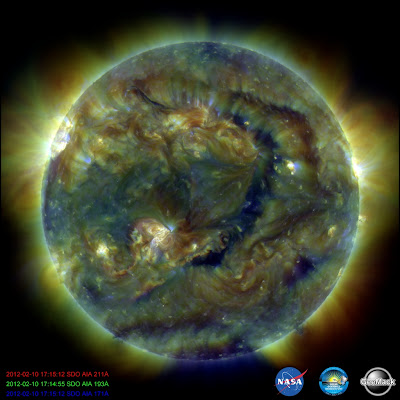
This is a montage of the most recent data from the SDO's Atmospheric Imaging Assembly. The upper left shows the photosphere, the visible light from the Sun gathered by the 4500Å filter. You can see sunspots in this wavelength. The other three images are composites of various other channels. These types of composite images let us see several levels of the solar atmosphere at once.











